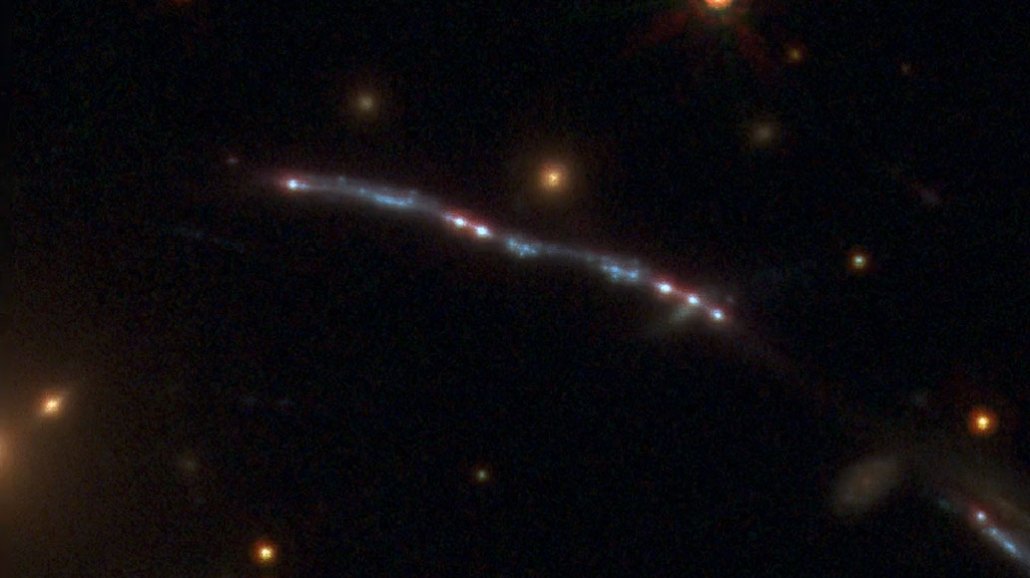
Visible and infrared light shine from a single star-forming region in the Sunburst Arc galaxy (center). The spot of light is duplicated six times in the arc in this Hubble Space Telescope image, thanks to the gravity of a separate galaxy cluster (not shown).
T.E. Rivera-Thorsen, Hubble Space Telescope